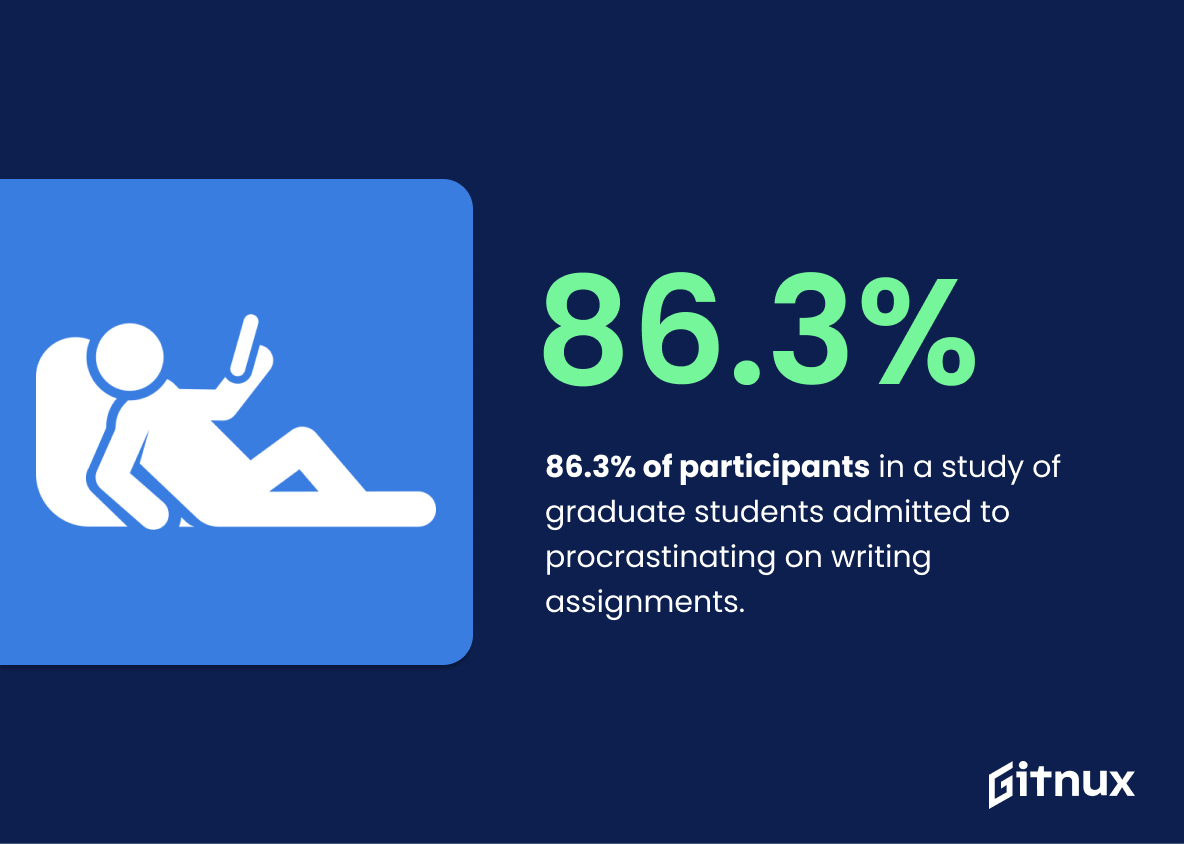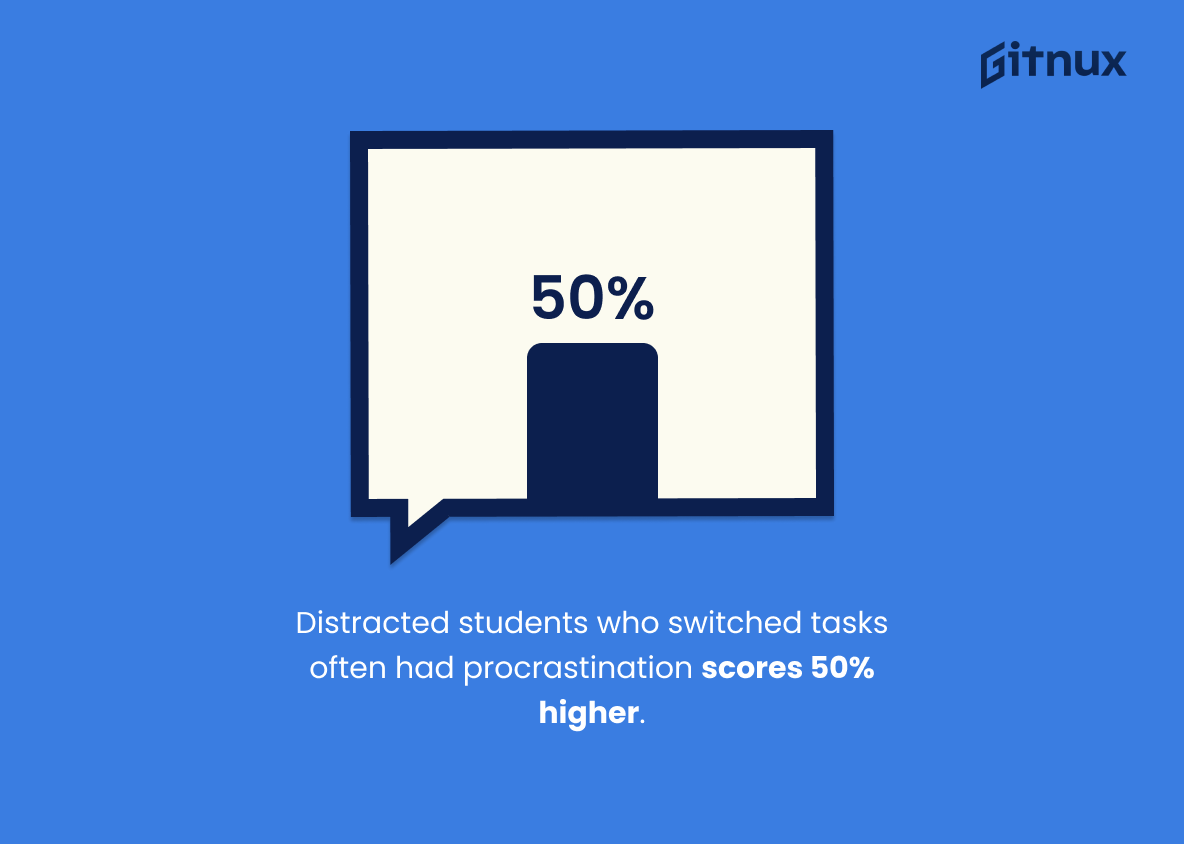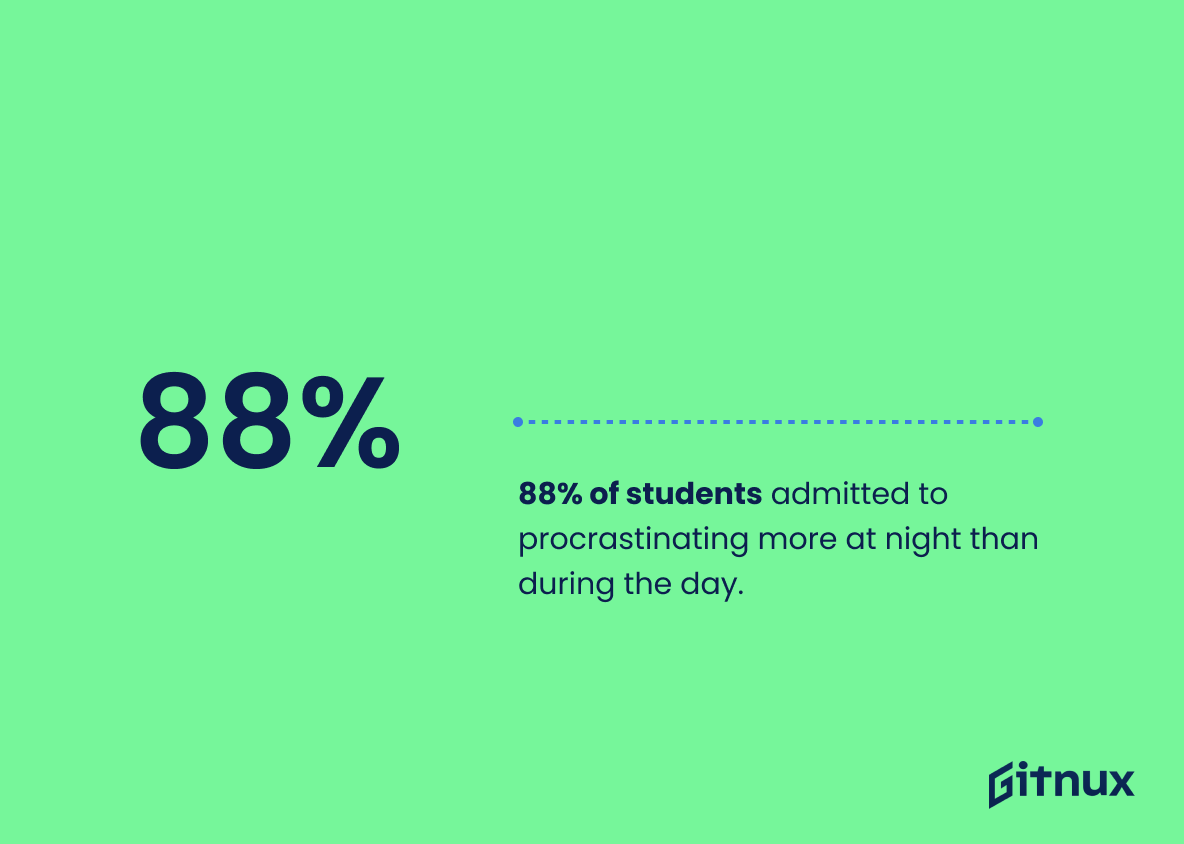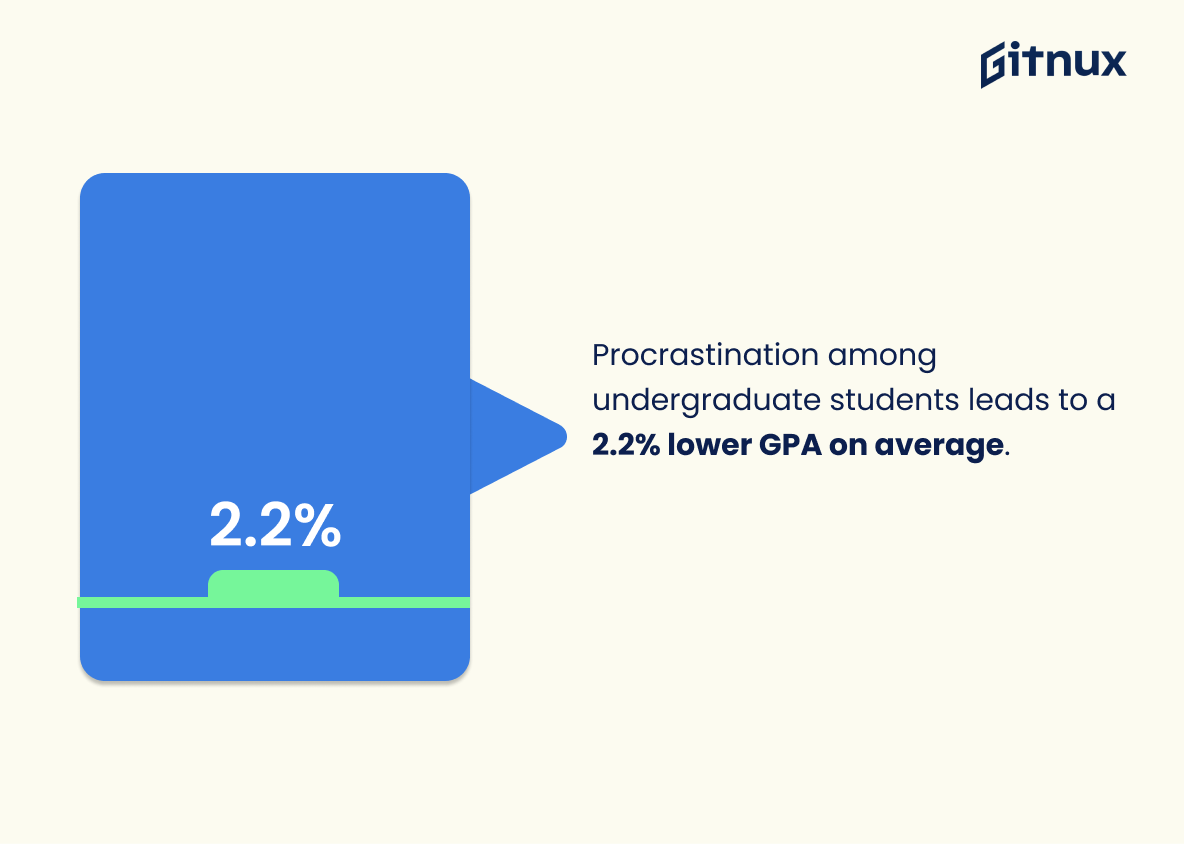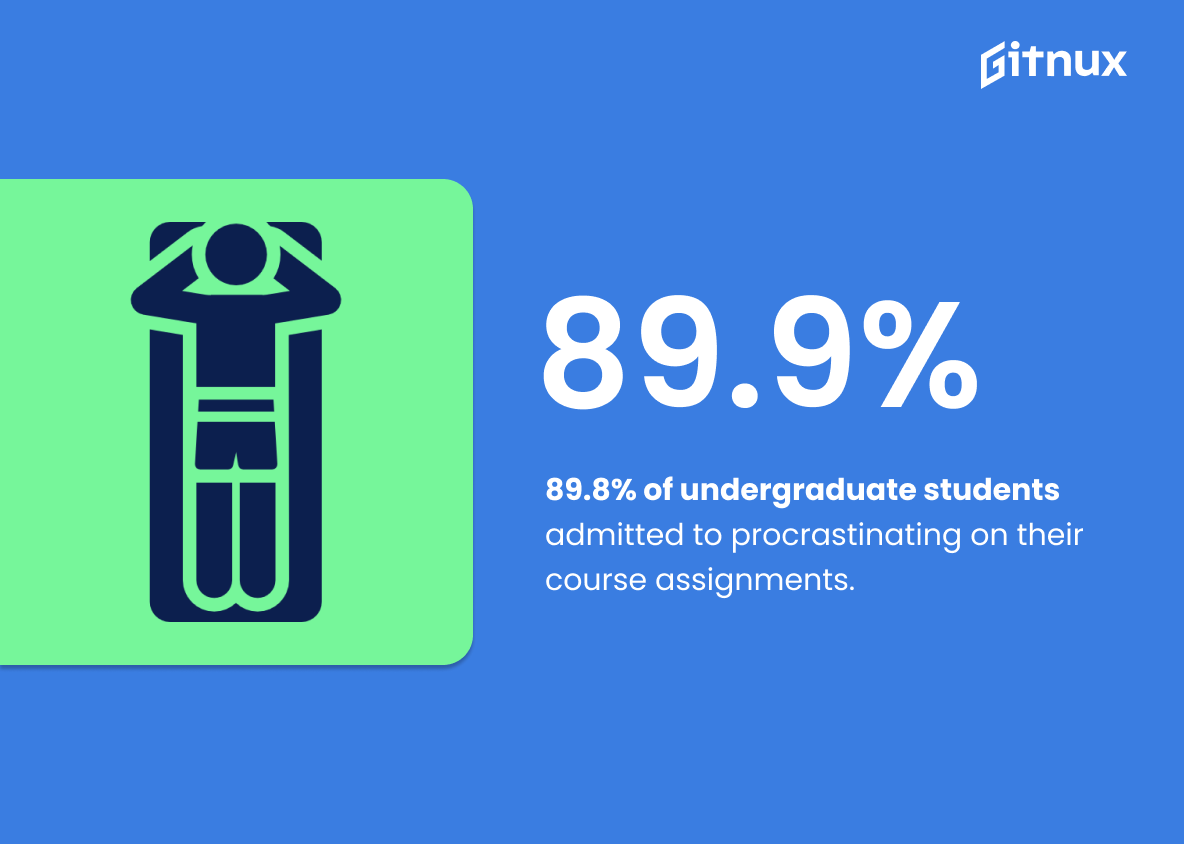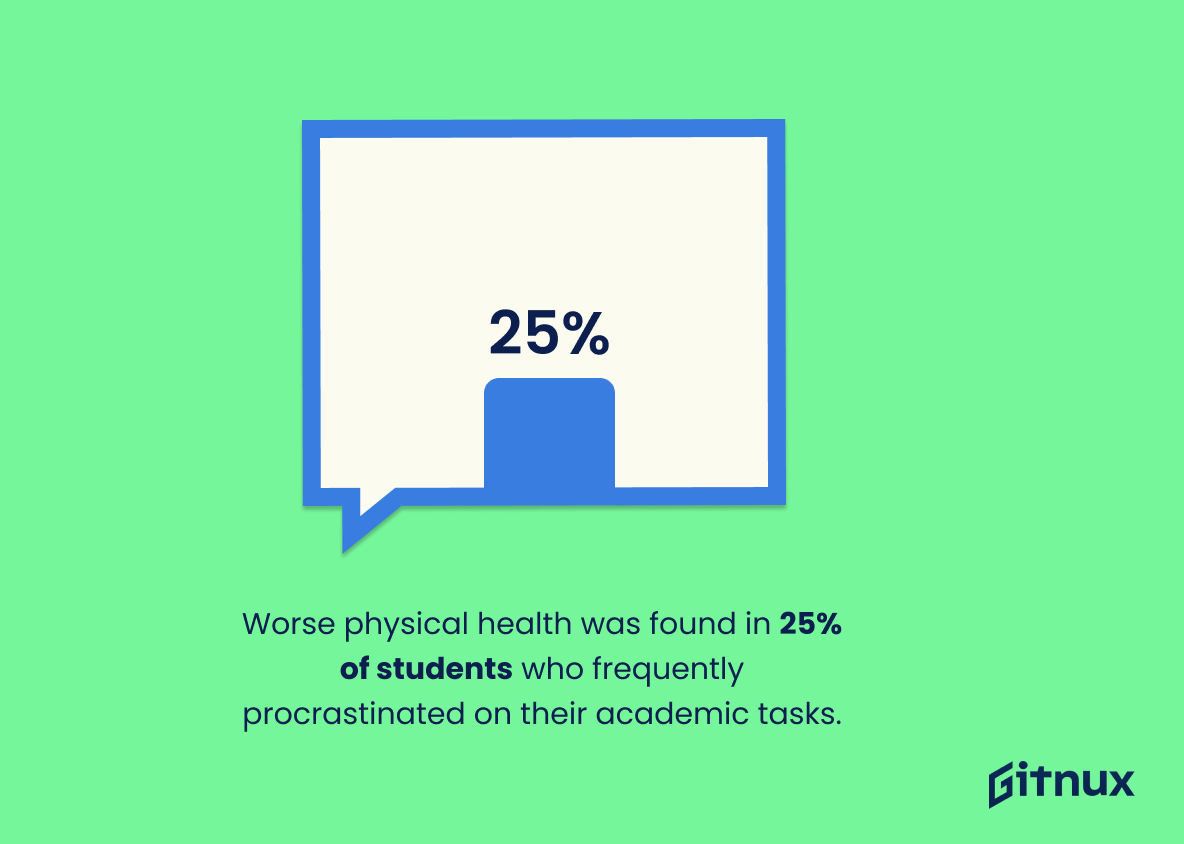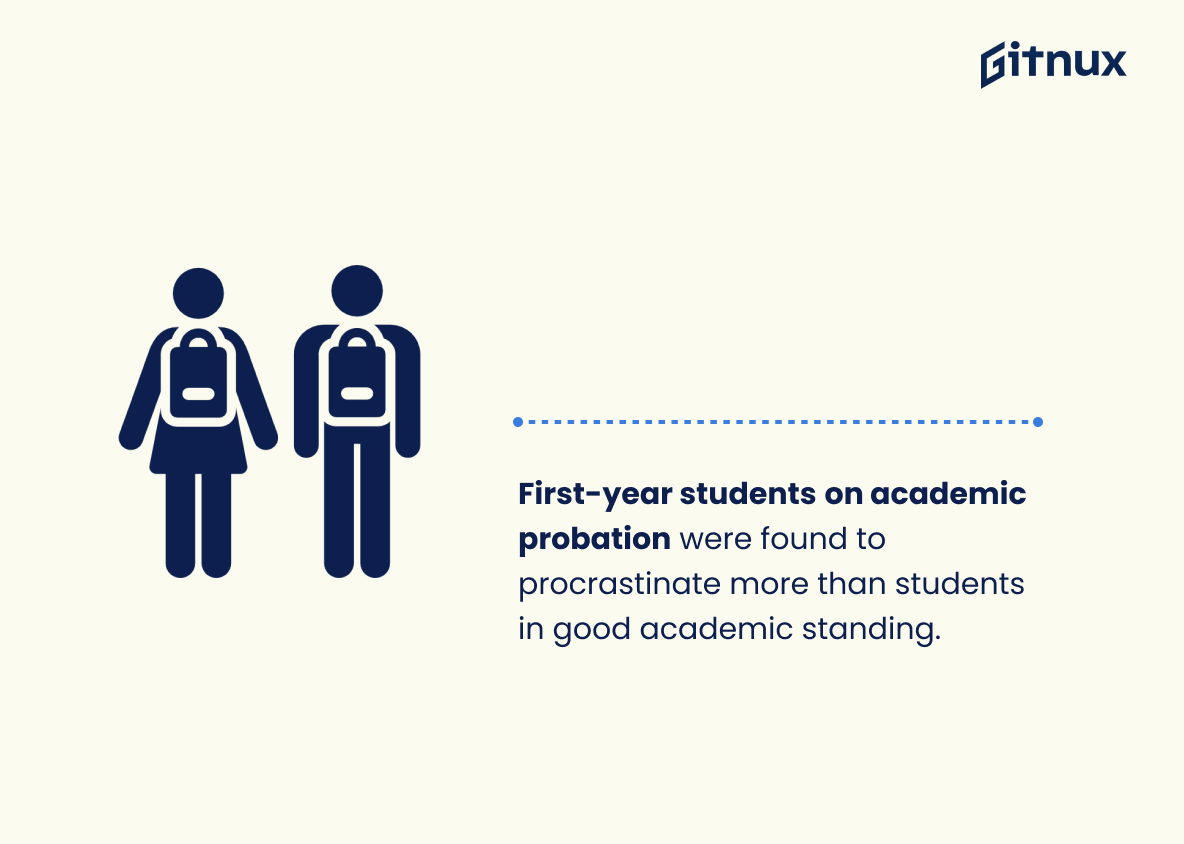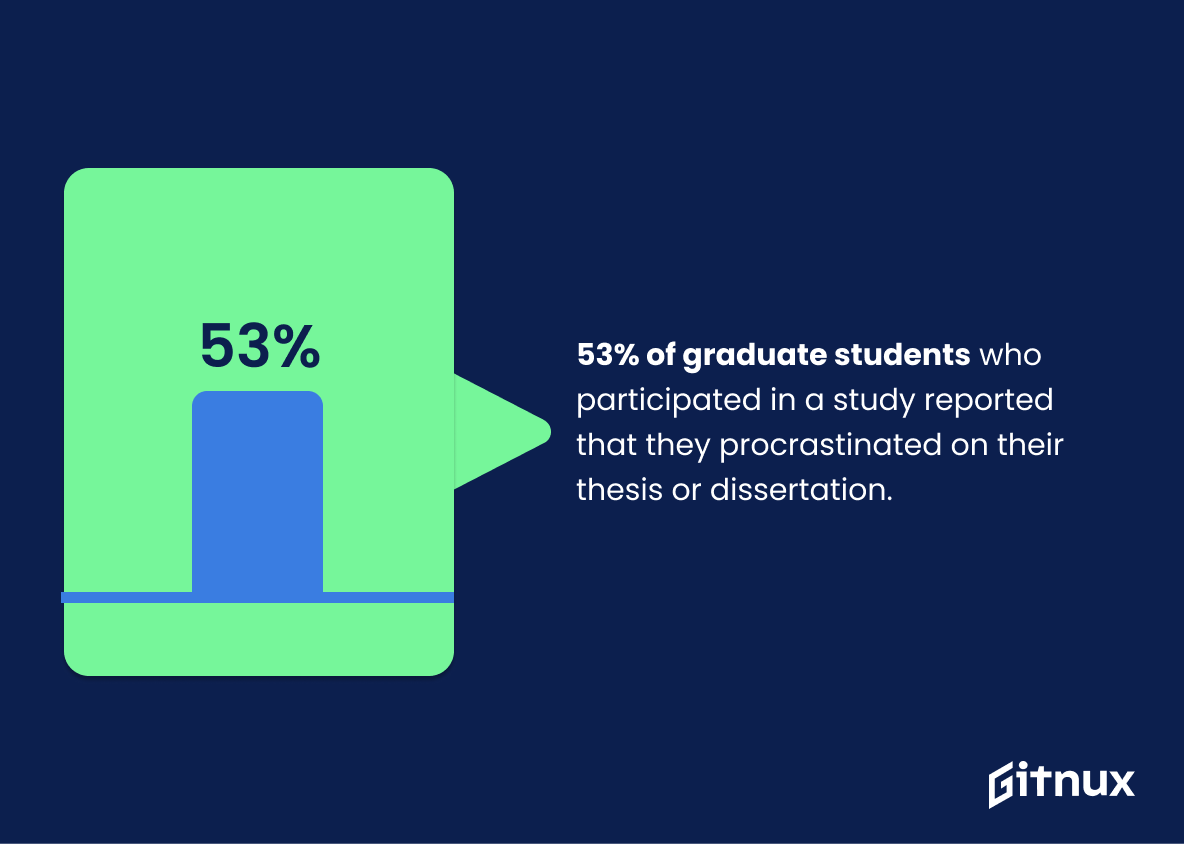Procrastination is a common problem among students of all ages. Studies have shown that 80-95% of college students engage in procrastination, while approximately 50% of high school students do so consistently and problematically. It has also been found that female students tend to procrastinate less than males; 66.1% versus 76.6%. Additionally, 36.6%, 86.3%, 53%, 35%, and 89.8% of university (UG & PG) student participants exhibited problematic procrastination on various tasks such as writing assignments or coursework respectively according to different studies conducted worldwide over the years .
Internet usage for non-study activities was identified as the most significant predictor for student procrastination with distracted individuals who frequently switch between tasks having scores which were 50 percent higher than those who did not exhibit this behavior according to one study . Furthermore, time of day affects how likely people are to put off their work – 88 percent said they were more likely at night compared to during the day – leading some research suggesting it can lead up 2 point 2 lower GPA’s on average amongst undergraduates . Those with ADHD reported significantly higher levels too , whilst two thirds admitted using social media instead when faced with academic challenges like thesis/dissertation writing . International Students however tended towards being less prone overall compared local peers , but still experienced burnout three times more often if they did succumb due perfectionism or fear failure related issues..
This statistic is a powerful indicator of the prevalence of procrastination among high school students. It highlights the fact that procrastination is a widespread issue that needs to be addressed, and it serves as a reminder that procrastination can have serious consequences for students’ academic performance and overall wellbeing.
Female students procrastinate less than males; 66.1% of females procrastinate, while 76.6% of males do.
This statistic is significant in the context of a blog post about Student Procrastination Statistics because it highlights the gender disparity in procrastination. It suggests that female students are more likely to stay on task and prioritize their work, while male students are more likely to put off their responsibilities. This information can be used to inform strategies for helping students of both genders manage their time more effectively.
Student Procrastination Statistics Overview
86.3% of participants in a study of graduate students admitted to procrastinating on writing assignments.
This statistic is a powerful indicator of the prevalence of procrastination among graduate students. It shows that the majority of students are struggling with this issue, and that it is a widespread problem that needs to be addressed. This statistic is an important piece of evidence that can be used to support the argument that procrastination is a serious issue that needs to be addressed.
Distracted students who frequently switch between tasks had procrastination scores that were 50% higher than those who did not.
This statistic is a powerful indicator of the impact of distraction on procrastination. It shows that students who are easily distracted are more likely to procrastinate, suggesting that reducing distractions can help students stay on task and avoid procrastination. This is an important insight for students and educators alike, as it provides a tangible way to reduce procrastination and improve student performance.
Time of day affects students’ tendency to procrastinate; 88% of students said they were more likely to procrastinate during the night than the day.
This statistic is a powerful indicator of the prevalence of procrastination among students, particularly during the night. It suggests that students are more likely to put off tasks and assignments when the sun goes down, which could be due to a variety of factors such as fatigue, lack of motivation, or simply the allure of other activities. This statistic is an important piece of information for any blog post about student procrastination statistics, as it provides insight into the habits of students and the potential causes of procrastination.
Procrastination among undergraduate students leads to a 2.2% lower GPA on average.
This statistic is a stark reminder of the consequences of procrastination among undergraduate students. It serves as a warning that procrastination can have a significant impact on academic performance, with a 2.2% lower GPA on average. This is a clear indication that procrastination should not be taken lightly and should be addressed as soon as possible.
International students tend to procrastinate less compared to their local peers.
This statistic is significant in the context of a blog post about Student Procrastination Statistics because it provides a unique insight into the behavior of international students. It suggests that international students may have different approaches to tackling tasks and deadlines than their local peers, which could be beneficial for students looking for strategies to reduce procrastination.
89.8% of undergraduate students admitted to procrastinating on their course assignments.
This statistic is a powerful indicator of the prevalence of procrastination among undergraduate students. It serves as a reminder that procrastination is a common issue among students, and that it is important to be aware of the potential consequences of delaying course assignments. This statistic is a valuable addition to any blog post about student procrastination statistics, as it provides a tangible example of the issue’s prevalence.
Worse physical health was found in 25% of students who frequently procrastinated on their academic tasks.
This statistic is a stark reminder of the potential consequences of procrastination. It highlights the fact that procrastination can have a detrimental effect on physical health, and serves as a warning to students to take their academic tasks seriously.
First-year students on academic probation were found to procrastinate more than students in good academic standing.
This statistic is significant in the context of student procrastination statistics because it demonstrates the correlation between procrastination and academic standing. It suggests that procrastination can have a direct impact on a student’s academic performance, and that students who are already struggling academically may be more likely to procrastinate. This information can be used to help students understand the importance of avoiding procrastination and taking proactive steps to improve their academic standing.
53% of graduate students who participated in a study reported that they procrastinated on their thesis or dissertation.
This statistic is a powerful indicator of the prevalence of procrastination among graduate students. It shows that a majority of those surveyed are struggling with procrastination when it comes to their thesis or dissertation, highlighting the need for strategies to help them overcome this issue. This statistic is an important piece of evidence to include in a blog post about student procrastination statistics, as it provides a clear picture of the scope of the problem.
Social media procrastination affects as many as 86% of university students.
This statistic is a powerful indicator of the prevalence of social media procrastination among university students. It serves as a stark reminder of the potential for procrastination to become a major issue for students, and highlights the need for strategies to help them manage their time more effectively. By including this statistic in a blog post about student procrastination statistics, readers can gain a better understanding of the scope of the problem and the importance of taking steps to address it.
Conclusion
The statistics presented in this blog post demonstrate that procrastination is a widespread issue among college and high school students. From the data, it appears that male students are more likely to procrastinate than female students, while international students tend to procrastinate less compared to their local peers. Additionally, Internet usage for non-study activities was found to be the most significant predictor of student procrastination. Furthermore, time of day affects how much people tend to put off tasks; 88% of surveyed individuals said they were more likely to delay during night hours rather than daytime ones. Finally, perfectionism and fear of failure have been identified as key predictors for academic procrastination in university settings with 32% being classified as high chronic procrastinators.
References
0. – https://www.www.ncbi.nlm.nih.gov
1. – https://www.www.ajol.info
2. – https://www.www.statisticsviews.com
3. – https://www.www.emerald.com
4. – https://www.files.eric.ed.gov
5. – https://www.source.sheridancollege.ca
6. – https://www.link.springer.com
7. – https://www.www.tandfonline.com
8. – https://www.www.researchgate.net
9. – https://www.thinkingmattersources.files.wordpress.com
